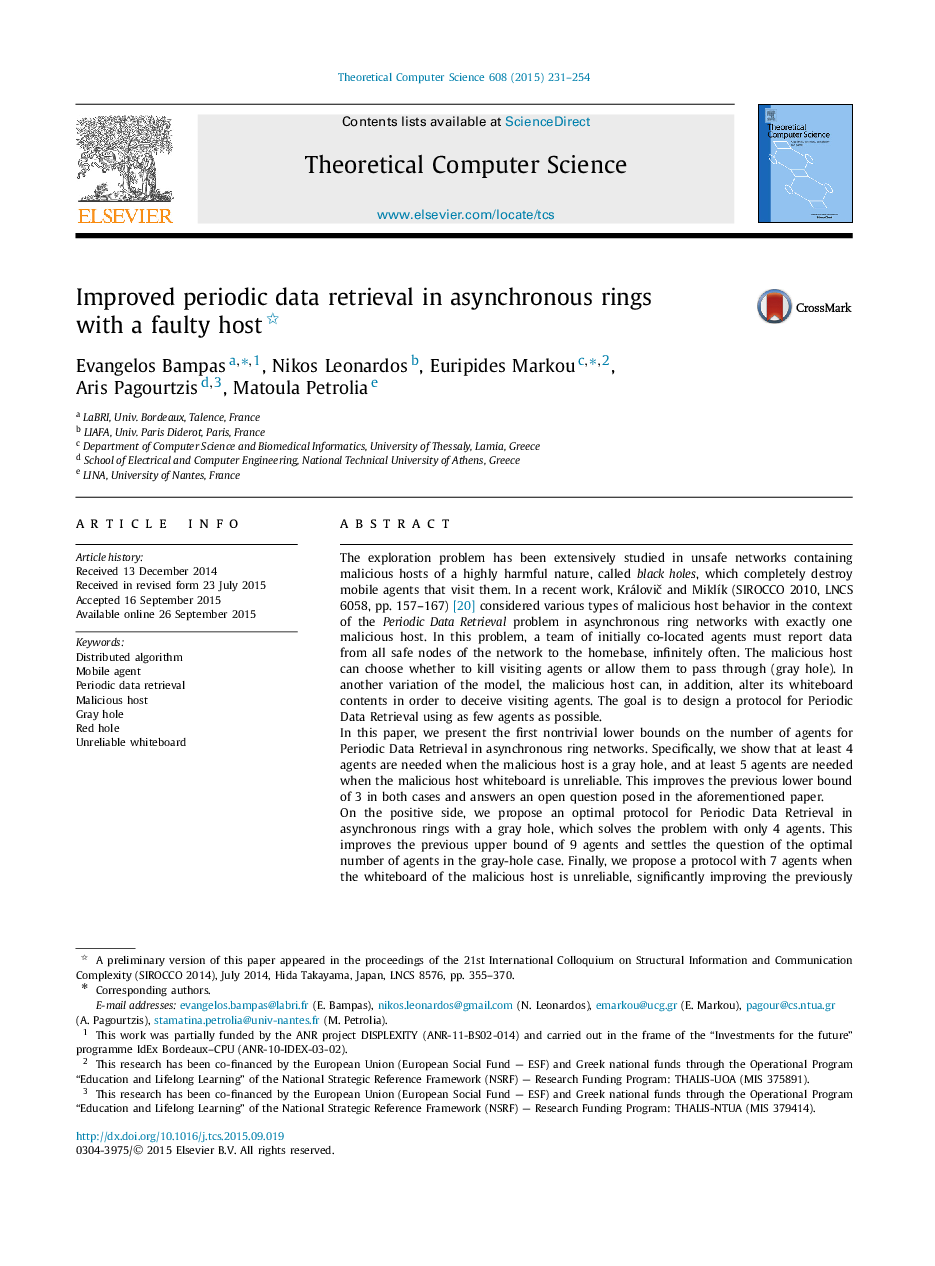| کد مقاله | کد نشریه | سال انتشار | مقاله انگلیسی | نسخه تمام متن |
|---|---|---|---|---|
| 435625 | 689920 | 2015 | 24 صفحه PDF | دانلود رایگان |
The exploration problem has been extensively studied in unsafe networks containing malicious hosts of a highly harmful nature, called black holes, which completely destroy mobile agents that visit them. In a recent work, Královič and Miklík (SIROCCO 2010, LNCS 6058, pp. 157–167) [20] considered various types of malicious host behavior in the context of the Periodic Data Retrieval problem in asynchronous ring networks with exactly one malicious host. In this problem, a team of initially co-located agents must report data from all safe nodes of the network to the homebase, infinitely often. The malicious host can choose whether to kill visiting agents or allow them to pass through (gray hole). In another variation of the model, the malicious host can, in addition, alter its whiteboard contents in order to deceive visiting agents. The goal is to design a protocol for Periodic Data Retrieval using as few agents as possible.In this paper, we present the first nontrivial lower bounds on the number of agents for Periodic Data Retrieval in asynchronous ring networks. Specifically, we show that at least 4 agents are needed when the malicious host is a gray hole, and at least 5 agents are needed when the malicious host whiteboard is unreliable. This improves the previous lower bound of 3 in both cases and answers an open question posed in the aforementioned paper.On the positive side, we propose an optimal protocol for Periodic Data Retrieval in asynchronous rings with a gray hole, which solves the problem with only 4 agents. This improves the previous upper bound of 9 agents and settles the question of the optimal number of agents in the gray-hole case. Finally, we propose a protocol with 7 agents when the whiteboard of the malicious host is unreliable, significantly improving the previously known upper bound of 27 agents. Along the way, we set forth a detailed framework for studying networks with malicious hosts of varying capabilities.
Journal: Theoretical Computer Science - Volume 608, Part 3, 10 December 2015, Pages 231–254
